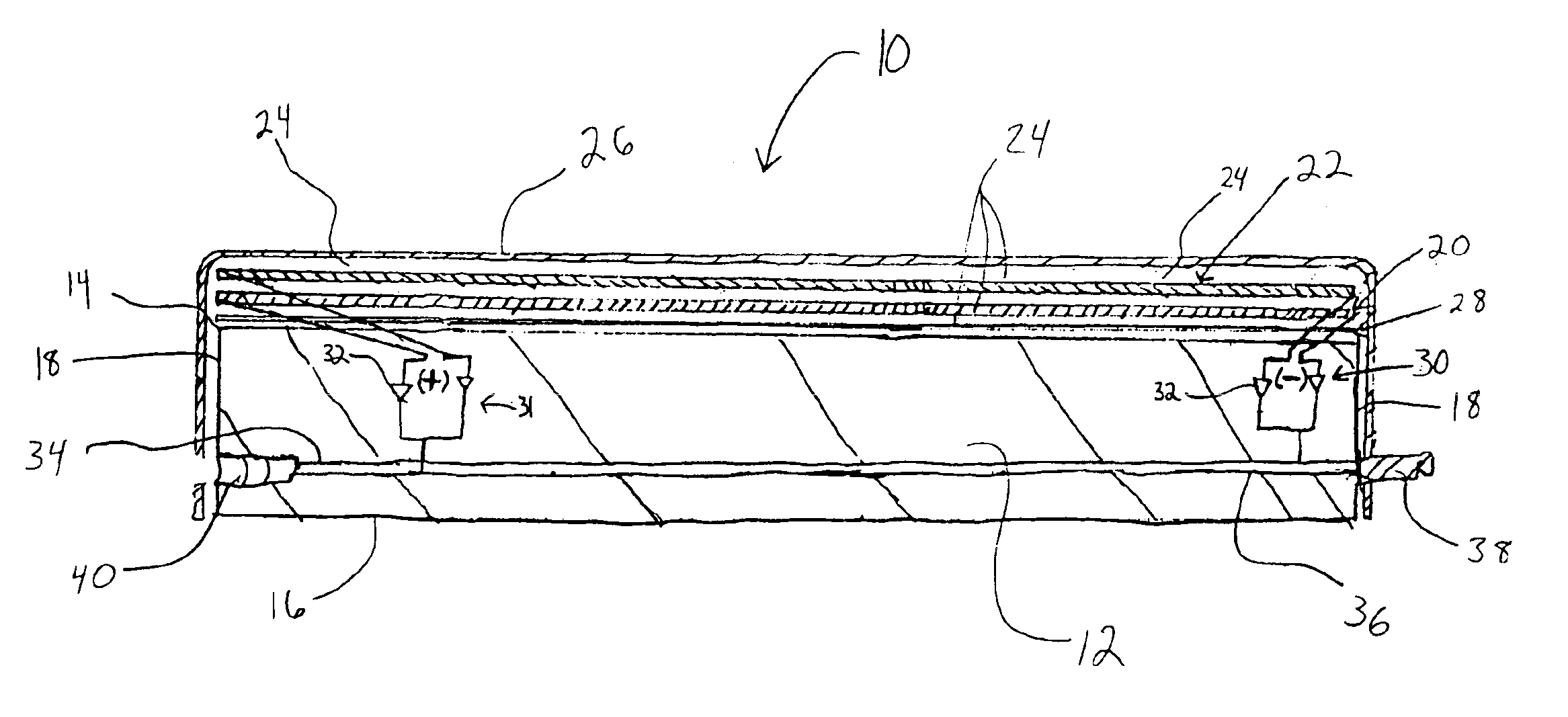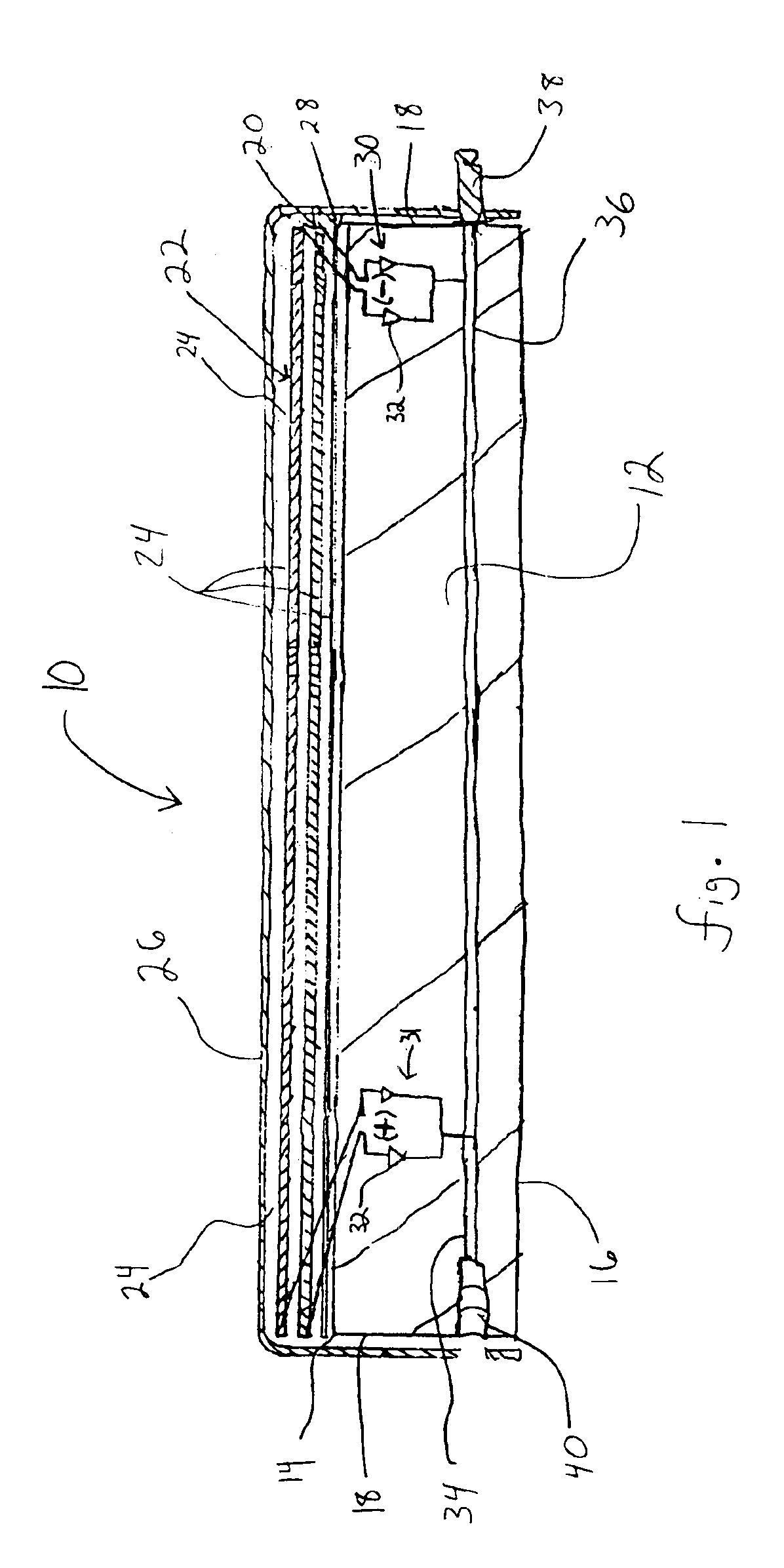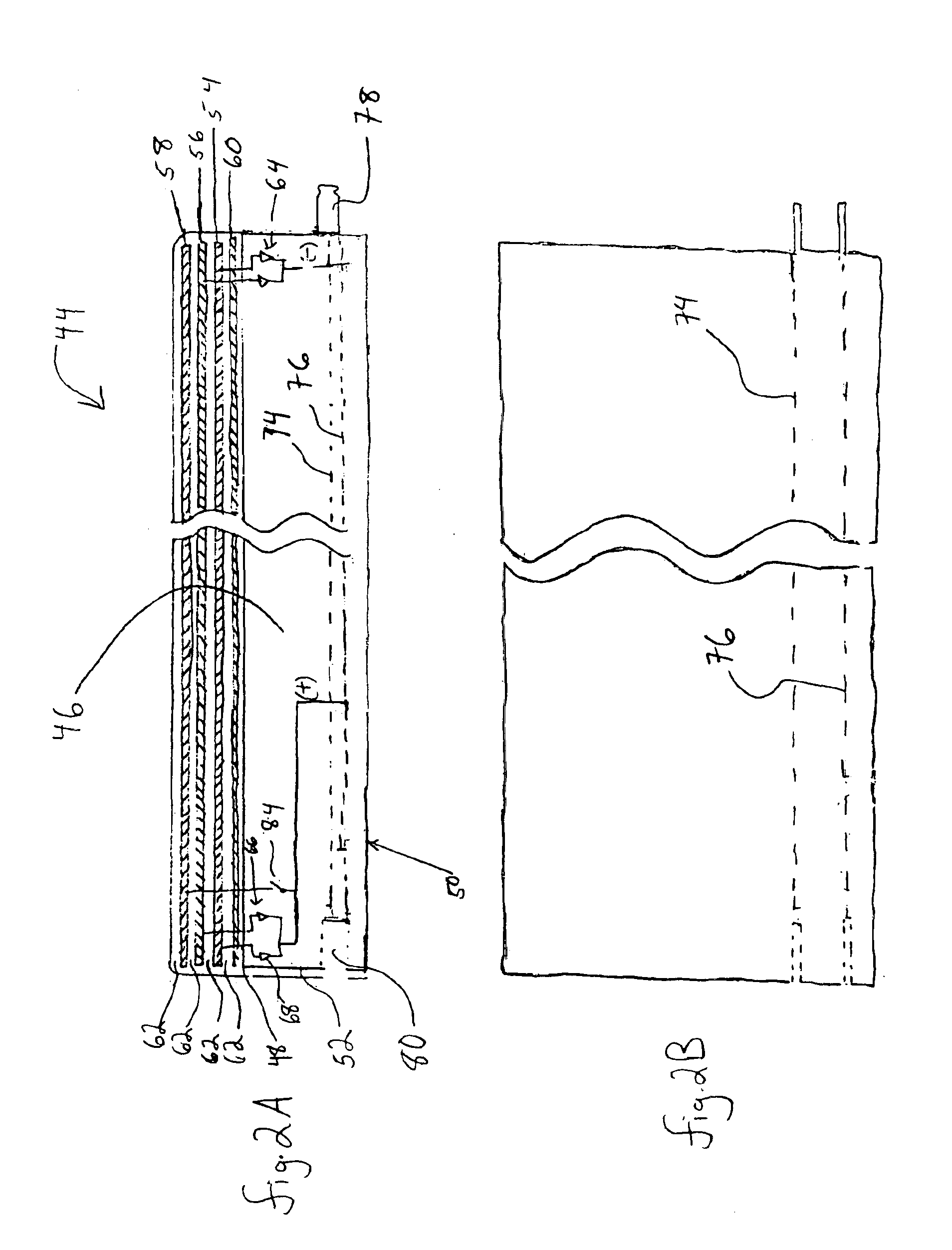Multi-use electric tile modules
a technology of electric tile and modules, applied in the field of outdoor tiles, can solve the problems of slow production cost, slow silicon crystal growth, and high cost of providing general use tiles with electrical components that are easy to install and electrically connect to other tiles without external wiring
- Summary
- Abstract
- Description
- Claims
- Application Information
AI Technical Summary
Benefits of technology
Problems solved by technology
Method used
Image
Examples
Embodiment Construction
[0037]The invention, in general, provides a multipurpose, electrically connectable tile module that contains an electroluminescent, photovoltaic, and / or thermovoltaic element upon its upper side. Preferably, the electroluminescent and voltaic elements are electrically insulated and are sealed to the tile substrate by a glaze. Optionally, the tile module may also include a battery and / or inverter. The tile modules are electrically connected by “male-to-female” (e.g., prong and socket) connectors along a side edge or bottom tab to eliminate the need for external wiring between tiles. Accordingly, the tile modules can be used to provide interesting light effects and / or electricity in a variety of outdoor flooring, roofing, and wall facade applications.
[0038]Turning to an especially preferred embodiment in FIG. 1, the electric tile 10 includes a rigid substrate 12. Preferably, the rigid substrate 12 includes ceramic or cement. However, tiles may be made from other rigid materials, inclu...
PUM
 Login to View More
Login to View More Abstract
Description
Claims
Application Information
 Login to View More
Login to View More - R&D
- Intellectual Property
- Life Sciences
- Materials
- Tech Scout
- Unparalleled Data Quality
- Higher Quality Content
- 60% Fewer Hallucinations
Browse by: Latest US Patents, China's latest patents, Technical Efficacy Thesaurus, Application Domain, Technology Topic, Popular Technical Reports.
© 2025 PatSnap. All rights reserved.Legal|Privacy policy|Modern Slavery Act Transparency Statement|Sitemap|About US| Contact US: help@patsnap.com



